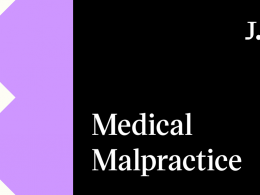Experiencing a medical malpractice case rejection, or perhaps several can be frustrating. Our medical and legal experts always go above and beyond to provide a thorough and honest assessment of your case. At Justpoint, we understand the physical, emotional, and financial toll which comes with medical malpractice and take your potential cases very seriously.
Unfortunately, as much as we would love to help everyone who comes to us, in some situations it’s not possible due to the nature of the case, medical malpractice laws, weak evidence, and other reasons beyond our control.

Below, we highlight some situations where attorneys might reject your malpractice case. For more insights, also read our other posts on subject:
- Why Your Personal Injury Claim was denied?
- If Your Case doesn’t Meet Medmal Criteria, What is Going on?
- What happens if your case is not our specialty?
6 Reasons Why Justpoint Won’t Take Your Case
Did you know that doctors win between 80% and 90% of jury trials due to weak evidence of medical negligence? This is about 70% of all the lawsuits!
Unfortunately, the odds of winning a malpractice case are extremely low, and for this reason, the attorney we work with have to be very particular about the cases they accept. Here are the most common reasons why your malpractice case might be turned down:
Insufficient Proof of Medical Malpractice
By its legal definition, medical malpractice occurs when a trained medical practitioner deviates from the standard healthcare practice. The standard is based upon what is considered the generally accepted diligent care and what other experts would do in a similar situation.
If every expert would take the same action under the very conditions, then the law doesn’t count that as medical malpractice. Until you can prove beyond reasonable doubt that the medical practitioner was negligent or out of standard care, your case cannot be built.
For this, you’ll need to show that:
- You and the practitioner had an established patient-doctor relationship.
- The doctor violated the recommended standard of healthcare.
- You sustained injuries or harm as a direct result of your doctor’s mistake.
Note that being subjected to rude medical workers, or getting treatment for an incurable illness will not count as medical malpractice.
No Evidence of Genuine Damages or Injury
Not all negligent actions lead to real damages. You cannot file for malpractice without proof of damage. A plaintiff must file for a malpractice case that directly led to damages or injuries that can be proven in a trial.
You may have proof of negligent actions by the care provider and injury/damage on the other. But if you cannot help the attorney prove the link between the two, then your case will, unfortunately, be rejected.
This is because sometimes, damages are related to the doctor’s error, and sometimes they’re not. For accurate evaluation of these damages, you or your attorney must seek another expert’s opinion in the same field of expertise. This professional must assess the damages and show how they’re linked to the medical error before your case can be filed.
Upfront Costs Associated With the Case Are Higher Than Outcome

Medical malpractice laws were enacted by the state to protect victims of medical malpractice and discourage medical practitioners from going against the acceptable standard of care.
But then, tort law is a notoriously complex field that requires deep and thorough investigations before your case materializes.
These investigations are expensive because they require intervention from other medical experts, assistance from other attorneys, court fees, and several other costs. When your attorney deems these costs more than the expected returns, unfortunately, they may be discouraged to take the case.
Attorneys working with Justpoint are only paid if they win the case. That means all the upfront costs from the beginning to the end of the case are entirely in the attorneys’ pocket. For this reason, they need to be a bit selective with the cases they choose to go after.
Your Case is Outside the Statute of Limitations
Every malpractice claim has a time limit in which it must be filed if the victim wants to seek justice. This time limit is what we call the statute of limitations. Once this time period elapses, your case can no longer be presented in a court of law.
For example, in New York, the statute of limitation rule states that you have two and a half years to file your malpractice lawsuit. The clock starts ticking on the day you became a victim of a medical error leading to injuries. 30 months from this date and your case will no longer be taken into consideration.
Find out more about the statute of limitation for lawsuits in your state.
No Eligible Survivor for Compensation
Unfortunately, medical malpractice sometimes leads to death. When the victim of malpractice passes away, the family members might take up the claim. Family members, including spouses, children, and parents, can eventually receive compensation for damages inflicted on their loved ones.
However, in situations where the victim doesn’t have any eligible family members for compensation, attorneys can’t touch the case.
So if you’re filing a malpractice claim relating to the demise of a loved one, check that you can prove a relation to the deceased family member so that you’re eligible for compensation. If you’re not, unfortunately, attorneys will have to turn down your case.
The Takeaway
Medical malpractice cases are very complex. The insurers of these medical practitioners fight with everything they have to protect their clients. Therefore, despite the attorney’s passion and desire to bring you justice, unfortunately they are also mandated to take a pass on some cases due to the above reasons and other factors. Don’t lose hope, keep going and all the best!












